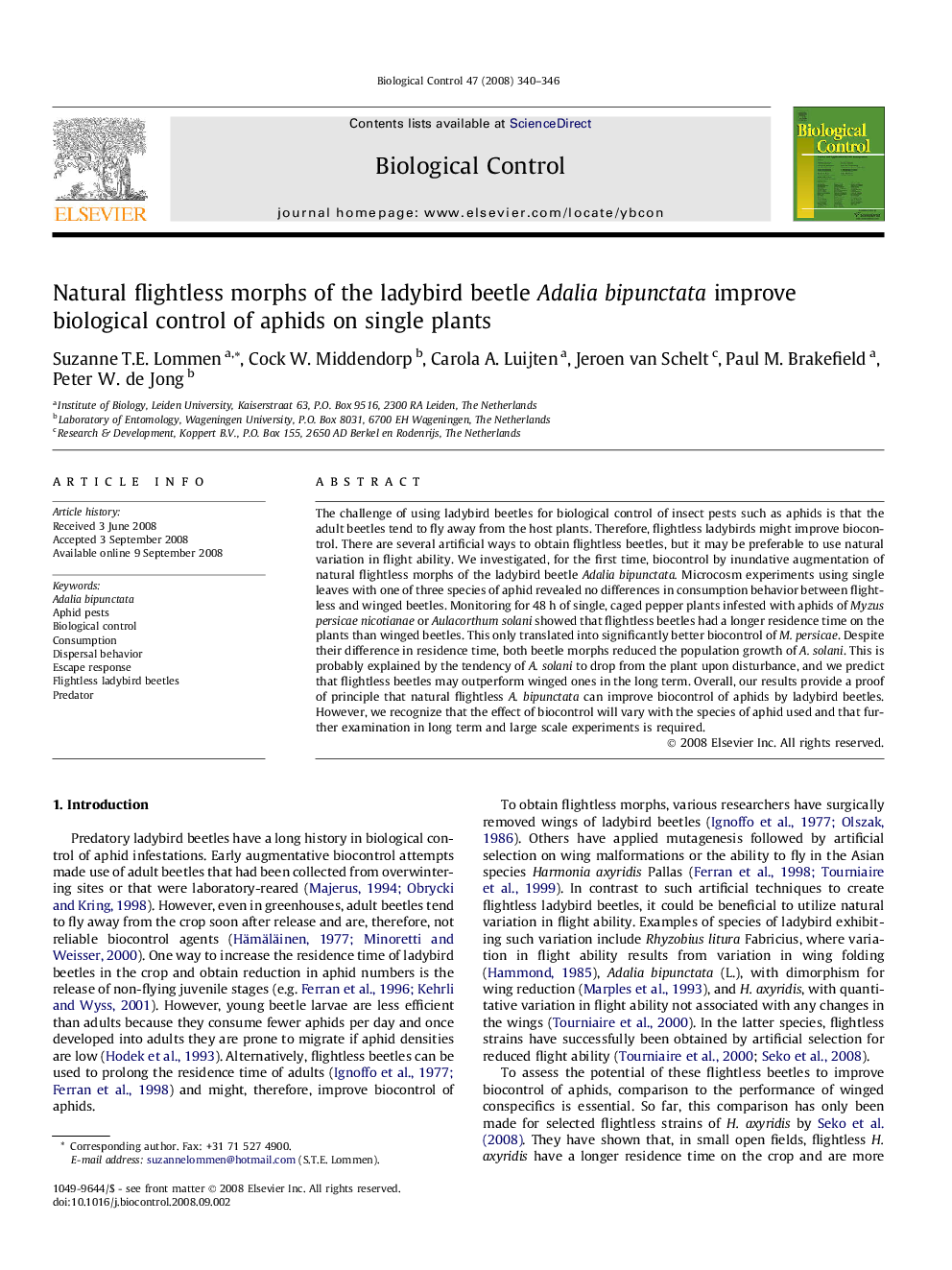| Article ID | Journal | Published Year | Pages | File Type |
|---|---|---|---|---|
| 4504795 | Biological Control | 2008 | 7 Pages |
The challenge of using ladybird beetles for biological control of insect pests such as aphids is that the adult beetles tend to fly away from the host plants. Therefore, flightless ladybirds might improve biocontrol. There are several artificial ways to obtain flightless beetles, but it may be preferable to use natural variation in flight ability. We investigated, for the first time, biocontrol by inundative augmentation of natural flightless morphs of the ladybird beetle Adalia bipunctata. Microcosm experiments using single leaves with one of three species of aphid revealed no differences in consumption behavior between flightless and winged beetles. Monitoring for 48 h of single, caged pepper plants infested with aphids of Myzus persicae nicotianae or Aulacorthum solani showed that flightless beetles had a longer residence time on the plants than winged beetles. This only translated into significantly better biocontrol of M. persicae. Despite their difference in residence time, both beetle morphs reduced the population growth of A. solani. This is probably explained by the tendency of A. solani to drop from the plant upon disturbance, and we predict that flightless beetles may outperform winged ones in the long term. Overall, our results provide a proof of principle that natural flightless A. bipunctata can improve biocontrol of aphids by ladybird beetles. However, we recognize that the effect of biocontrol will vary with the species of aphid used and that further examination in long term and large scale experiments is required.
